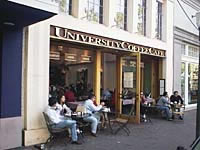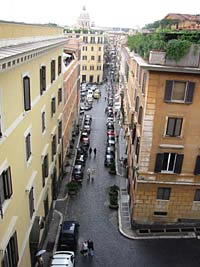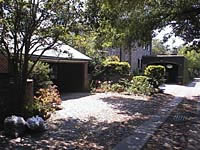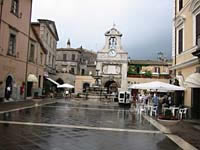Urbanism is all about the pattern of how we build things. The following was prepared by Charles Brewer and the staff of Green Street Properties while working with members of the surrounding communties.
Conventional Development
The conventional development pattern of the last 50 years or so calls for a complete separation of uses – and you are pretty much guaranteed to have to drive every time you do anything.
We object to this type of development for at least three reasons. First, its environmental impact is huge. Second, it leads to economic hyper-segregation and creates a places where is it harder to develop and nurture the bonds that make a healthy society. And third, we just plain don’t like the kind of places this development pattern creates. To us they’re just not loveable, and often tend to feel pretty generic.
The Alternative - Walkability, Traditional Neighborhoods, and Good Urbanism
There is an alternative. There are centuries worth of human wisdom about how to build liveable, lovable places. In fact, the basic principles that apply to creating human environments that are good for people, good for nature, and loveable places are quite clear, and pretty simple.
The overriding principle of traditional neighborhoods and what we think of as good urbanism are walkability and investment in the public realm (public spaces and zones); who wants to walk if the public realm is bad? Walkability means that things are built on a human scale, not an automotive scale. Pedestrians are safe from traffic and safe from crime. There are destinations to walk to. Distances are relatively short. And the walk is interesting.
The principle of walkability says a whole lot about how a neighborhood should be designed. Street geometries must keep car speeds moderate. On street parking should shield pedestrians from passing vehicles. There needs to be a mix of uses, so there is somewhere to go – like a store. Blocks should be short. Buildings should address the street in an engaging way.
The Good Life
The dominant vision of "the good life" in recent decades has been about things like exclusivity, privacy, a bigger and bigger house, a bigger and bigger yard, and a bigger and bigger car. It is almost like the flawed ultimate vision of the good life would need to be as far as possible from any other human beings.
We are interested in a different vision of the good life. We crave a life that is less about the private realm, and more about a rich public realm. In this vision, when you walk out your door, you are somewhere! You walk down to the corner, and there is a café. There are people! Friends, as well as casual acquaintances. Children can walk to school. Older people can stroll. You don’t need to get in your car every single time you want to do something.
At Green Street Properties, we strive to create neighborhoods with a rich public realm where our vision of the good life can thrive. In order to make the principles of urbanism a reality, Green Street Properties combines the collaborative development efforts of design and planning experts from varying disciplines while working closely with local constituents to achieve a cohesive plan and well orchestrated implementation.
References:
Congress for the New Urbanism
Smart Growth America
|
|

A storefront that really embraces the sidewalk in Palo Alto, California.

City life in Rome, Italy, at four stories and below.

Charleston, South Carolina - Alleys can be beautiful too.

The primary piazza of a small town in Italy. |